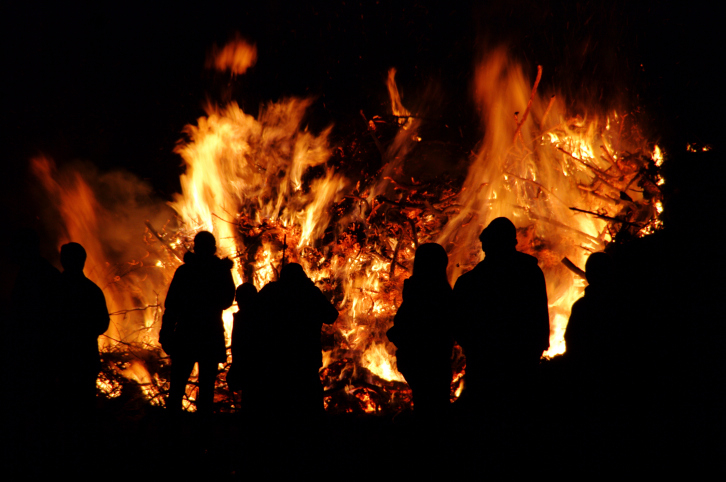Saint-Jean Baptiste Day and the Summer Solstice

Saint-Jean Baptiste Day, also known as La fete Nationale, is a public holiday in Quebec and occurs each year on June 24. It always falls around the same time as the summer solstice, or Midsummer, which has been celebrated since ancient times in France and other European countries including Sweden, Norway, Finland, Spain and the United Kingdom.
Pagan History
In Europe, Midsummer, also called Litha, traditions have been observed since pre-Christian times. The main focus of Litha celebrations have always been centered on the power of the sun, and were particularly important in agricultural societies. The holiday, which usually occurs on June 20 or June 21, is the day of the summer solstice and the longest of the year. The sun reaches the highest point in the sky, or its zenith. The word solstice is derived from the word solstitium, Latin for “sun stands still.” The lighting of bonfires, which stood for the lightness and warmth of the summer, was a common way to mark the occasion.
The ancient Romans honored Juno, for whom the month of June was named, during this time of year. She was the goddess of women, childbirth and marriage. June was (and still is) a popular month to be married.
Christian History
While the Midsummer holiday is pagan in origin, Christians associate it with the birth of John the Baptist. This prophet and saint predicted the arrival of Jesus Christ. John’s own birth was considered by Christians to be a miracle and has many parallels to Christ’s life. Zechariah and Elizabeth, John’s parents, were past childbearing years when he was born. The Archangel Gabriel came to Zechariah and told him that he and Elizabeth would have a son and they were to name him John. John’s birthday was six months before Christ’s, whom he would eventually baptize.
Canadian History
The first Saint-John the Baptiste Day celebration in Canada is believed to have occurred on the night June 23, 1636 on the St. Lawrence River. A group of French colonists are thought to have commemorated the occasion with cannon shots and a bonfire on the St. Lawrence River.
In the 19th century, the holiday rituals were mostly religious and backed by the Catholic Church. Bonfires, a tradition that dated back to pagan times, were lit and there were also parades. Pope Pius X declared St. John the Baptist the patron saint of French Canadians in 1908. June 24 officially became a public holiday in Quebec in 1924.
Saint-John the Baptiste Day celebrations became more secular in the 20th and 21st centuries. A bill was introduced in the Canadian Parliament in 2011 to make the day a federal holiday throughout Canada, but it has not been passed.
Modern Day Traditions
In modern times, Saint-John the Baptiste Day and the Midsummer are celebrated in a variety of ways.
Saint-John the Baptiste Day
The people of Quebec look forward to this public holiday every year. Some of the following ways they commemorate the day have historical origins and others are more contemporary in nature:
- Bonfires
- Parades
- Musical performances
- Art Exhibitions
- Fireworks
Midsummer
Litha is one of the most important days of the year to pagans. Here a few of the ways people celebrate the occasion. Even for non-pagans, the holiday can still be a fun way to mark the summer solstice.
- Take a hike and enjoy nature
- Host a bonfire for family and friends
- Build a Litha altar and decorate it with flowers, vegetables and lit candles
- Learn and grow by reading a new book or taking a class such as yoga.
Saint-John the Baptiste Day and Litha are connected by thousands of years of tradition and rituals. The holidays honor one of the most important figures in Christian history and celebrate the sun and summer.

